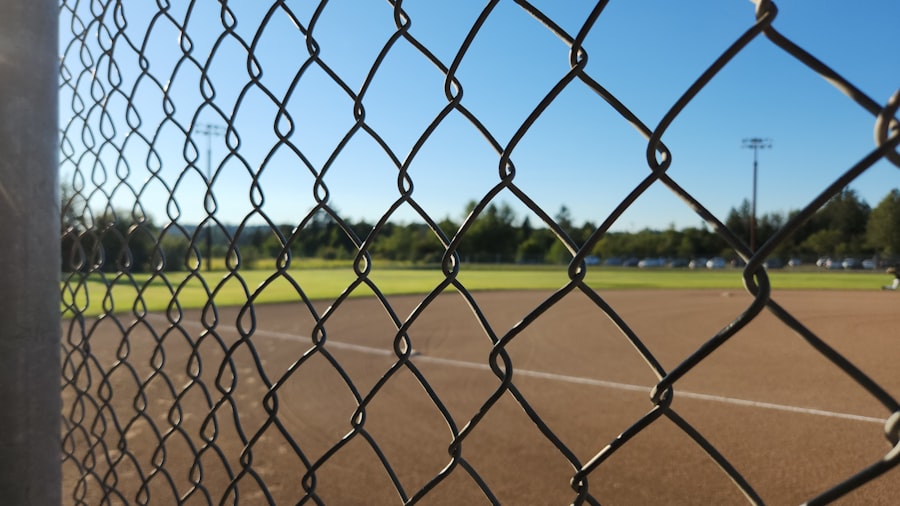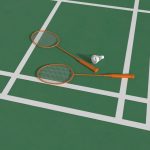Mastering the Art of Softball: Tips for Success
Description
Softball is a bat-and-ball sport that shares many similarities with baseball but has its own unique set of rules and gameplay dynamics. The game is played between two teams, each consisting of nine players, on a diamond-shaped field. The objective is to score runs by hitting a pitched ball and running around a series of bases.
The fundamental differences between softball and baseball include the size of the ball, the pitching style, and the dimensions of the field. In softball, the ball is larger, typically measuring 30.5 centimeters in circumference, and is pitched underhand from a distance of 43 feet for fast-pitch and 50 feet for slow-pitch games. The game can be played in various formats, including fast-pitch, slow-pitch, and modified pitch, each with its own set of rules and competitive levels.
Fast-pitch softball is often played at higher levels of competition, including collegiate and professional leagues, where pitchers can throw at speeds exceeding 70 miles per hour. Slow-pitch softball, on the other hand, is more recreational and allows for a more leisurely pace of play, making it popular among amateur leagues and social gatherings. Understanding these distinctions is crucial for players and coaches alike, as they influence training regimens, strategies, and player development.
Key Takeaways
- Softball is a team sport similar to baseball, played with a larger ball on a smaller field.
- Proper technique and form are essential for success in softball, including correct pitching, hitting, and fielding techniques.
- Hand-eye coordination is crucial for softball players, and can be improved through drills and practice.
- Speed and agility are important for base running and fielding, and can be enhanced through specific training exercises.
- Building strength and endurance is key for softball players, and can be achieved through strength training and conditioning programs.
Developing Proper Technique and Form
Mastering the fundamentals of softball requires a strong emphasis on proper technique and form. Whether it’s batting, pitching, or fielding, each skill demands specific mechanics that can significantly impact performance. For instance, when batting, players should focus on their stance, grip, and swing mechanics.
A balanced stance with feet shoulder-width apart allows for better weight distribution and stability. The grip on the bat should be firm yet relaxed to enable fluid movement during the swing. Additionally, players must learn to rotate their hips and shoulders effectively to generate power while maintaining control over the bat’s trajectory.
Pitching in softball also necessitates a keen understanding of technique. The underhand motion is distinct from traditional overhand pitching in baseball and requires a different set of muscle groups. Pitchers must develop a consistent windmill motion that incorporates their legs, core, and arm to achieve maximum velocity while maintaining accuracy.
Drills focusing on arm speed, wrist snap, and follow-through can help pitchers refine their technique. Furthermore, understanding the importance of body positioning and balance during the pitch can lead to improved performance on the mound.
Improving Hand-Eye Coordination

Hand-eye coordination is a critical skill in softball that directly influences a player’s ability to hit the ball effectively and make accurate throws. This coordination involves the brain’s ability to process visual information and translate it into precise motor actions. To enhance this skill, players can engage in various drills that challenge their reflexes and timing. For example, using a tennis ball or a smaller training ball can help players improve their tracking ability as they learn to judge distances and speeds more accurately.
Players can practice with a partner who tosses balls at varying speeds and angles or utilize rebound nets that return balls at unpredictable trajectories.
Additionally, incorporating visual training techniques, such as focusing on specific targets while hitting or fielding, can further enhance a player’s ability to connect with the ball consistently.
Enhancing Speed and Agility
| Metrics | Results |
|---|---|
| 40-Yard Dash Time | 5.2 seconds |
| Agility Shuttle Time | 4.5 seconds |
| Vertical Jump Height | 24 inches |
| Cone Drill Time | 7.8 seconds |
Speed and agility are paramount attributes for any successful softball player. The ability to sprint between bases quickly or react swiftly to a hit ball can make a significant difference in game outcomes. To develop these physical attributes, players should engage in specific training regimens that focus on explosive movements and quick directional changes.
Sprinting drills that emphasize acceleration can help players improve their base-running speed. For instance, short sprints of 10 to 20 yards can be incorporated into practice sessions to simulate game situations where quick bursts of speed are necessary. Agility training often includes ladder drills, cone drills, and shuttle runs that enhance footwork and coordination.
These exercises train players to change direction rapidly while maintaining balance and control. Incorporating plyometric exercises such as box jumps or lateral bounds can also contribute to overall speed and agility by developing fast-twitch muscle fibers essential for explosive movements on the field. By consistently integrating these training elements into their routines, players can significantly enhance their performance during games.
Building Strength and Endurance
Strength and endurance are foundational components of athletic performance in softball. Players require upper body strength for powerful swings and accurate throws, while lower body strength is crucial for sprinting and stability during fielding plays. To build strength effectively, players should engage in resistance training that targets major muscle groups relevant to softball performance.
Exercises such as squats, lunges, bench presses, and deadlifts can help develop the necessary muscle mass and power. Endurance training is equally important as it allows players to maintain high levels of performance throughout the duration of games or tournaments. Incorporating cardiovascular exercises such as running, cycling, or swimming into training regimens can improve overall stamina.
Interval training—alternating between high-intensity bursts of activity followed by rest periods—can also be particularly beneficial for simulating the stop-and-go nature of softball games. By focusing on both strength and endurance training, players can enhance their overall athleticism and reduce the risk of injury during competition.
Mastering Mental Toughness and Focus

Building Confidence through Visualization
Visualization is a powerful technique that involves mentally rehearsing successful performances or specific plays to build confidence and reduce anxiety before games. By vividly imagining themselves performing well, players can develop a strong sense of self-belief and prepare themselves for high-pressure situations.
Setting Goals for Success
Goal setting is another essential tool for developing mental toughness in softball. By establishing both short-term and long-term goals, such as improving batting averages or mastering specific skills, players can create a roadmap for their development and stay motivated throughout their training journey. Achieving each milestone can foster a sense of accomplishment and drive players to continue improving.
Managing Stress with Mindfulness
Mindfulness practices, such as meditation or breathing exercises, can help players manage stress levels during high-pressure situations, allowing them to perform at their best when it matters most. By incorporating these practices into their training routine, players can develop greater mental resilience and stay focused under pressure.
Perfecting Defensive Skills
Defensive skills are crucial in softball as they determine a team’s ability to prevent runs from being scored by the opposing team. Players must develop proficiency in various defensive techniques such as fielding ground balls, catching fly balls, and executing effective throws to bases. Fielding drills that emphasize proper glove positioning, footwork, and quick decision-making are essential for honing these skills.
For instance, practicing fielding grounders from different angles helps players adapt to various game situations while improving their reaction times. Catching fly balls requires not only skill but also an understanding of positioning and timing. Players should practice tracking balls in the air while maintaining awareness of their surroundings to avoid collisions with teammates or obstacles on the field.
Additionally, mastering throwing techniques is vital for making accurate throws to bases or home plate. Drills that focus on arm strength, accuracy, and quick release can significantly enhance a player’s throwing capabilities. By dedicating time to perfecting these defensive skills, players contribute to their team’s overall success on the field.
Excelling in Offensive Strategies
Offensive strategies in softball encompass various tactics aimed at maximizing scoring opportunities while minimizing outs. Understanding situational hitting—knowing when to sacrifice bunt or hit for power—is essential for players looking to excel offensively. Coaches often emphasize the importance of reading pitchers’ tendencies and adjusting batting approaches accordingly.
For example, if a pitcher struggles with control early in the game, batters may adopt a more patient approach at the plate to draw walks or capitalize on mistakes. Base running strategies also play a significant role in offensive success. Players must be aware of when to take risks—such as stealing bases or advancing on passed balls—while also understanding when to hold back to avoid unnecessary outs.
Communication among teammates is vital during offensive plays; knowing when to signal for a hit-and-run or when to execute a squeeze play can lead to successful scoring opportunities. By mastering these offensive strategies through practice and game experience, players can significantly enhance their contributions to their team’s overall performance on the field.
If you’re a fan of softball, you may also be interested in learning about the latest technology in sports photography. Check out this article on PicsArt Photo Studio Collage to discover how you can enhance and edit your softball game photos to share with friends and family. This app offers a variety of tools and filters to make your pictures stand out and capture the excitement of the game.
FAQs
What is softball?
Softball is a bat-and-ball sport that is similar to baseball. It is played on a smaller field and with a larger ball.
How is softball played?
Softball is played between two teams of nine players each. The game consists of innings, with each team taking turns to bat and field.
What are the basic rules of softball?
The basic rules of softball include pitching the ball underhand, hitting the ball with a bat, running the bases, and fielding to get the opposing players out.
What equipment is used in softball?
The equipment used in softball includes a bat, a ball, gloves for fielding, helmets for batting, and protective gear for the catcher.
What are the different types of softball?
There are two main types of softball: fastpitch and slowpitch. Fastpitch softball is played with a larger ball and faster pitching, while slowpitch softball is played with a smaller ball and slower pitching.
What are the health benefits of playing softball?
Playing softball can help improve cardiovascular health, strength, agility, and hand-eye coordination. It also promotes teamwork and social interaction.





